► Meet the £50k Skoda
► vRS gets 296bhp and four-wheel drive
► Nearly as spacious as the SUV
After a break of nearly 40 years, the Skoda Enyaq Coupe sees a return for the rakish roofline after years of sensible saloons, hatchbacks and estates. It also marks the first time the vRS badge has been applied to an all-electric model, Skoda having previously dipped a toe with the plug-in hybrid Octavia vRS iV. The result? The new Enyaq is one of our favourite electric cars right now.
The UK market does without a small battery 62kWh entry-level model, and you won’t be seeing the mid-range 80X four-wheel drive model (that’s SUV only). A healthy price premium for the new bodystyle pushing the Coupe vRS above £50k might raise an eyebrow, but the added dash of style could attract potential Kia EV6, Tesla Model Y and Hyundai Ioniq 5 owners.
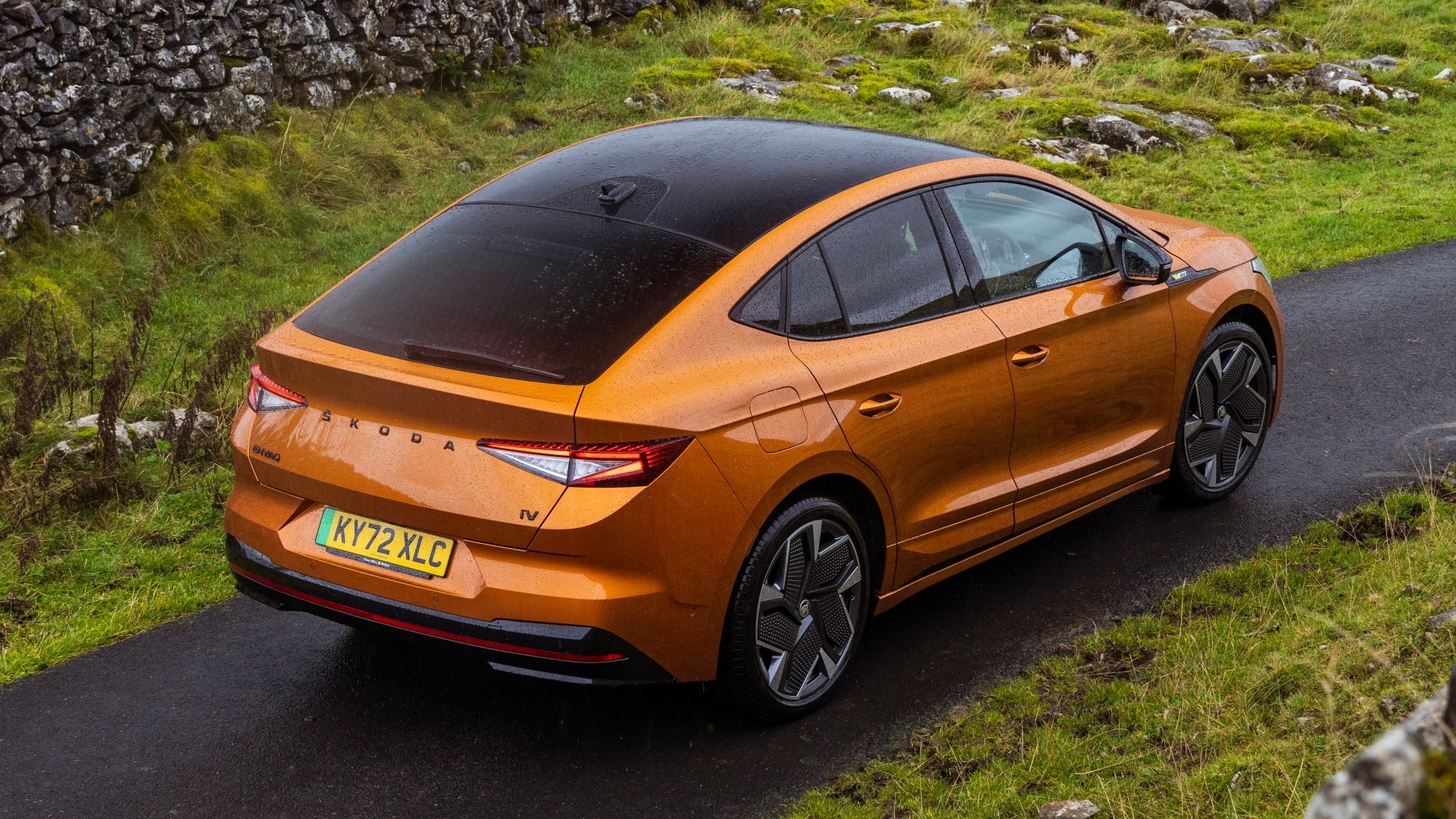
So, what’s new?
Much of the original car is retained, with the big changes happening behind the driver. The most interesting part of the car, the C-pillar, is particularly sharp and shapely – sharing the same stretched Hoffmeister Kink used to great effect in the Octavia and Superb.
Skoda engineers say that the Coupe’s sleeker body improved the Enyaq’s already impressive battery range between 10-15 miles in real world driving, although that’s not fully reflected in the WLTP figures. The vRS model delivers similar range and efficiency to the standard 80X model.
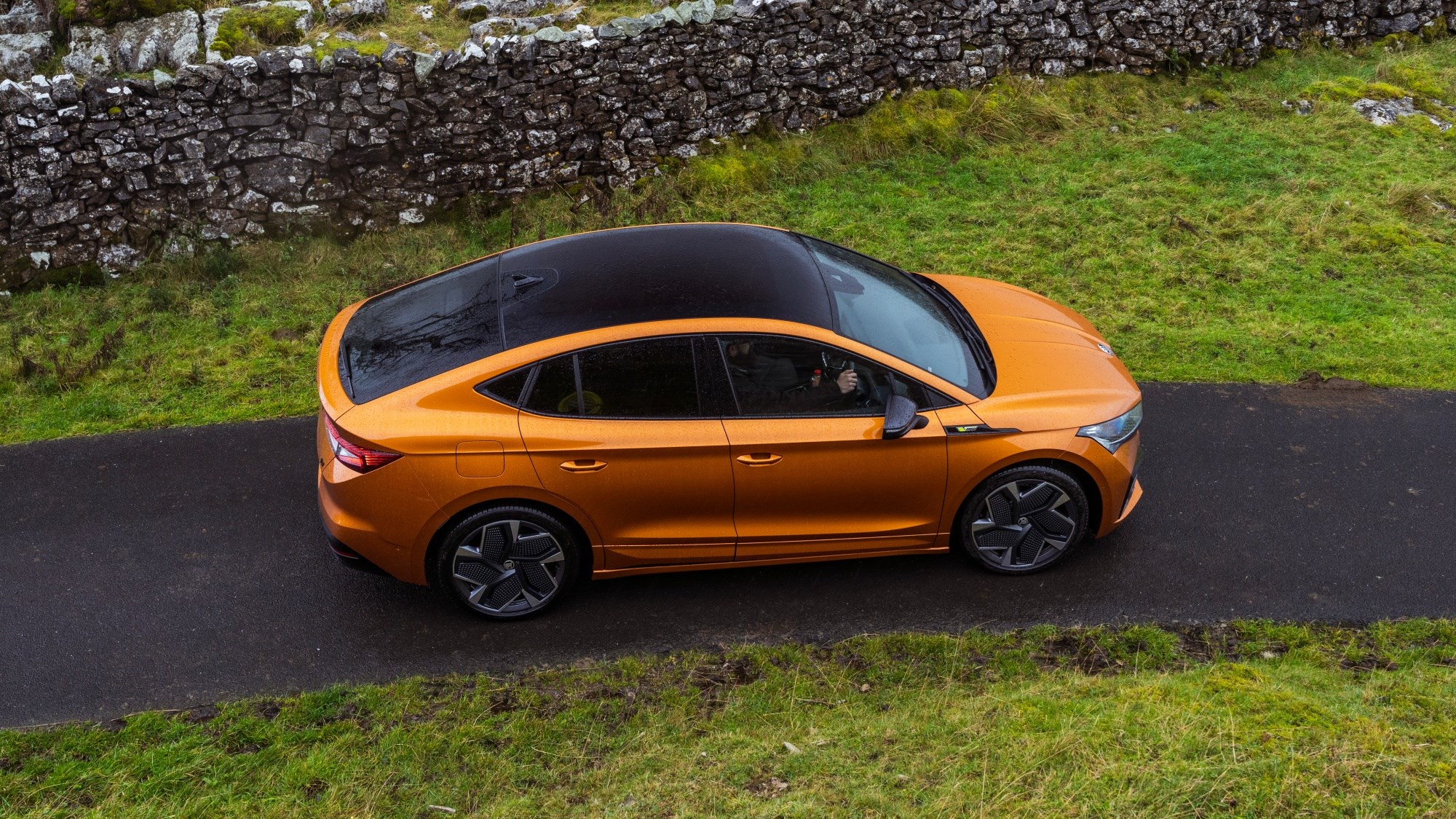
Tell me more about the vRS
To all intents and purposes, it’s a Volkswagen ID.4 GTX given the Czech treatment, so you get the same 82kWh battery, twin e-motors, four-wheel drive and 296bhp. Naturally you also get more aggressive bumpers, flashier alloy wheels, sports seats and more vRS badging than you can shake a carbon-effect interior trim at.
Performance is usefully upgraded over the standard Enyaq 80X thanks to an additional 40bhp, but it’s still warm rather than hot. The sprint from 0-62mph comes up in 6.5 seconds, a massive 2.2 seconds ahead of the rear-wheel drive 80 Coupe if some way off four-wheel drive versions of the EV6 and Ioniq 5.
What’s it like to drive?
We’ve driven the iV 80 abroad and vRS in the UK, coming away with a real sense of deja vu. As we said at the top, there’s not a great deal wrong with the Enyaq, and an awful lot to like – but if you want your thrills, you’re going to need to look elsewhere.
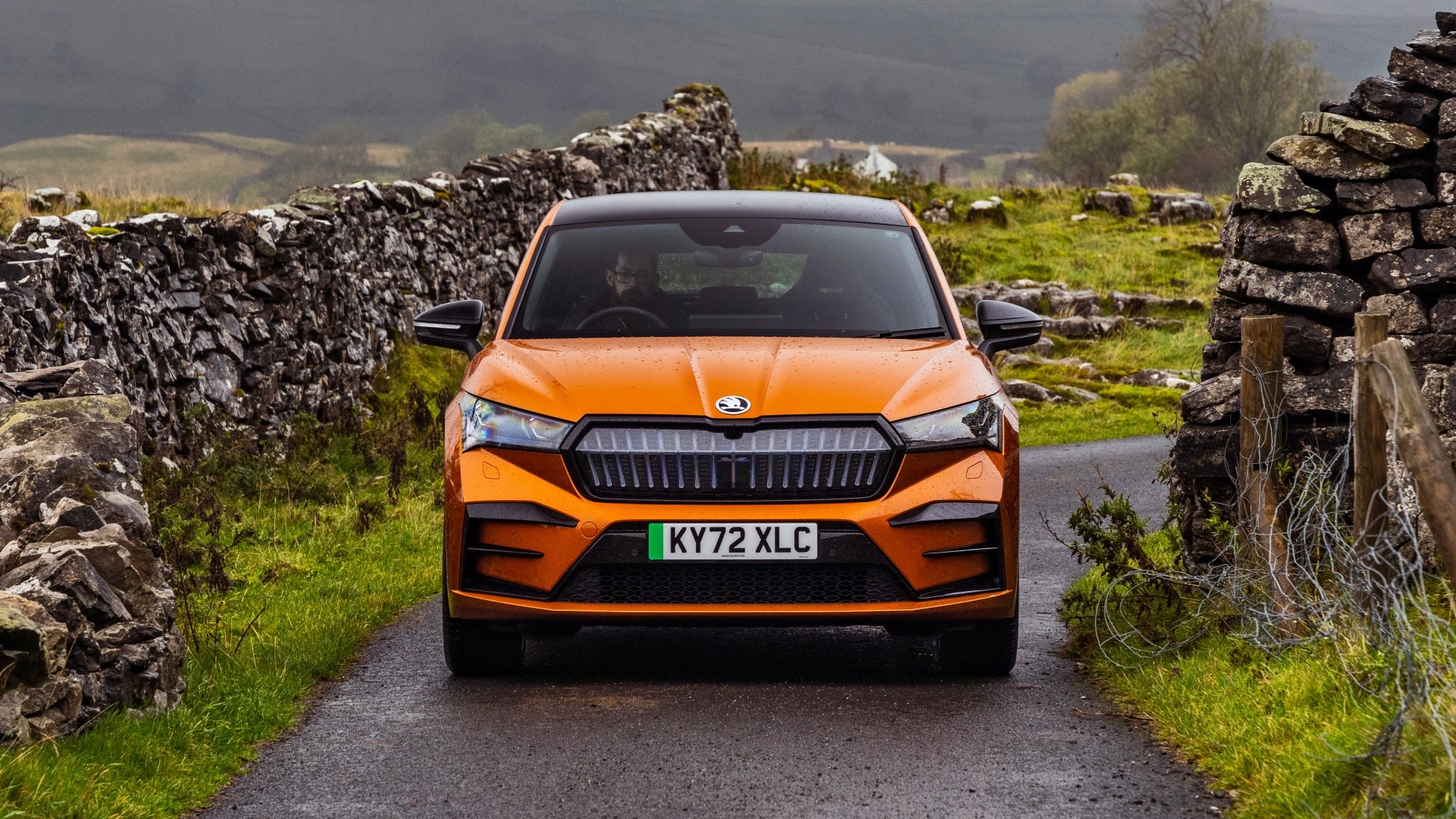
However, the iV 80 remains as solid, well-tempered and refined as ever – if you want to get somewhere unflustered, this really is your car. The ride quality is generally smooth and well-damped, although sharp imperfections can shudder through and destabilise its equilibrium. High-speed refinement is impressive, with low levels of wind and road noise, and you come away feeling that this is a very well resolved product.
Performance is adequate rather than exciting. There’s enough performance to see you past ambling traffic on single-carriageway roads, and joining a motorway is stress-free. But in today’s EV market, it’s hardly at the sharp end of the grid.
Handling is accurate and served up few vices, and despite its compliant ride, there’s not too much bodyroll to complain about. Threading it quickly down a B-road shows that it’s capable without serving up any real engagement feedback, while there’s no disguising its weight when it comes to deft changes in direction. Numb but capable sums it up.
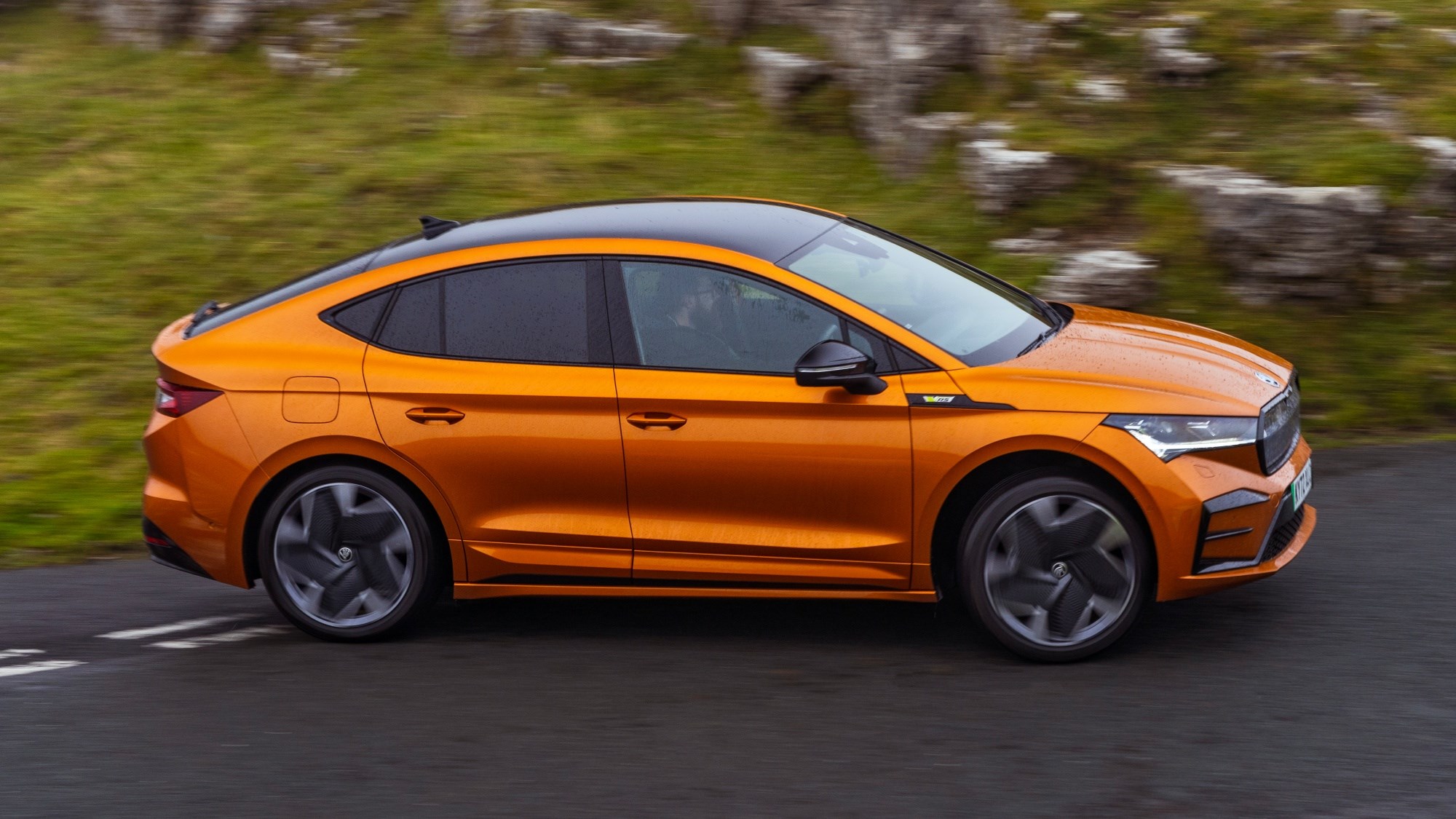
And what about the vRS?
It certainly stays true to its predecessors that have worn the badge, being every bit as civilised as its lesser siblings yet packing a bit more bite. Acceleration from a standstill certainly feels quick, the four-wheel drive generating tonnes of traction even in the wet, yet it tails off a fair bit as you approach 60mph. There’s only so much 296bhp can do when it’s hauling 2178kg after all.
Our test car in the UK did without adaptive dampers and rode on the standard 20-inch wheels rather than the optional 21s. So equipped, it delivers a comfortable ride on the motorway and feels not a great deal firmer over road imperfections than a regular Enyaq. Body control is improved, making it feel more planted on a typical British B-road.
The vRS feels a little keener in the bends than lesser Enyaqs, with sharper turn in and a bit less roll while the steering makes placing the nose easy. Reassuring weight and predictable response will satisfy most, but you still won’t find the vRS’s rack to be particularly talkative.
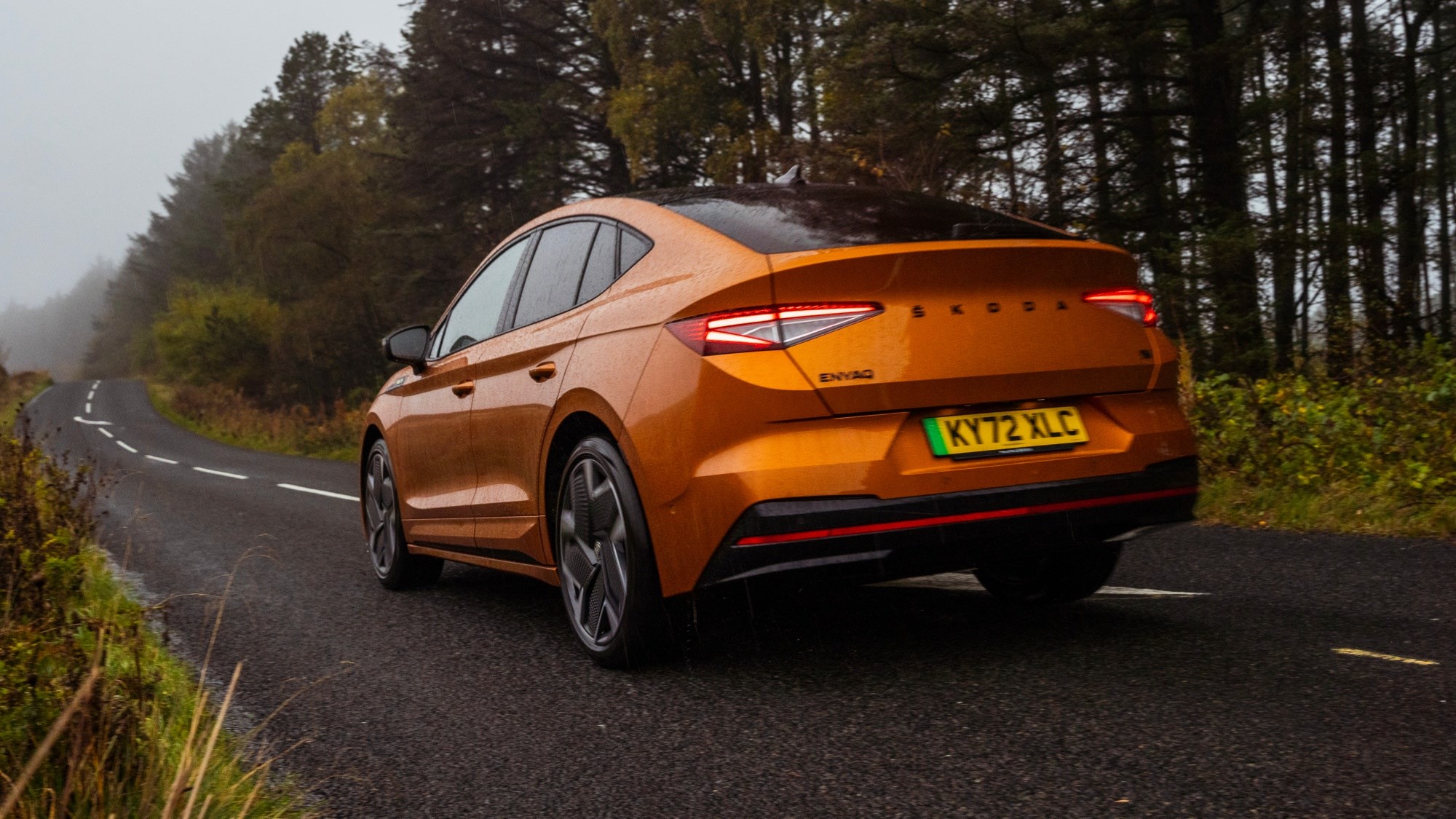
Slightly more expressive is the handling balance. Play sensible and you’ll find the combined efforts of the four-wheel drive and ESC keep things impressively stable. There’s plenty of traction exiting bends although you’re aware of the rear motor’s greater reserves of power before the stability control calls time. Flick the ESC to Sport and you’ve got a little more freedom, although a few degrees of angle soon brings the electronics back into play.
Overall it’s a brisk but not particularly exciting thing that offers little compromise in day-to-day liveability. It therefore fits into the vRS family perfectly and will no doubt prove a tempting choice for many. We’d certainly pick one over the pricier Volkswagen ID.4 GTX, but the Kia EV6 is a usefully faster option for similar money.
What’s it like inside?
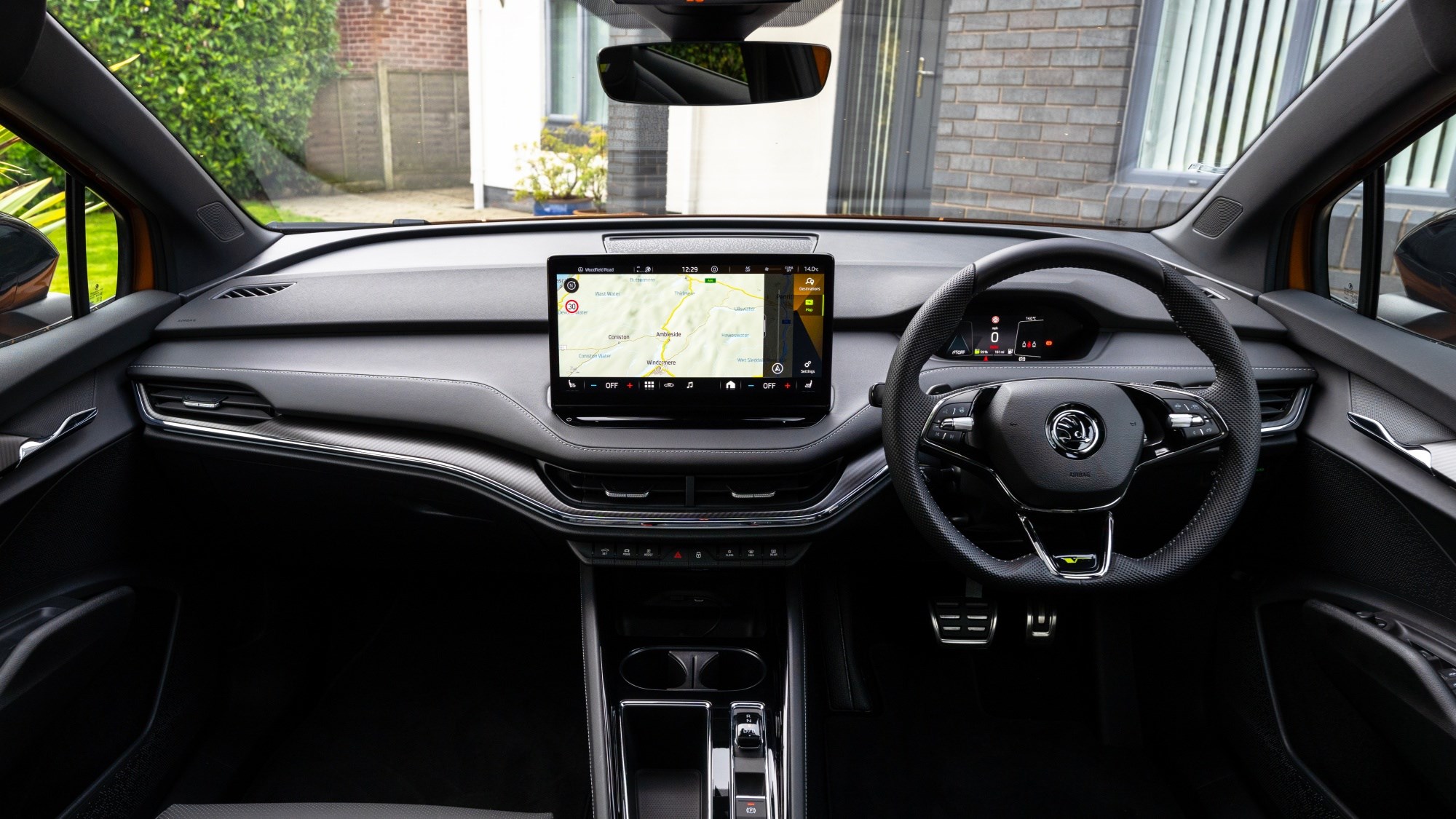
It’s a case of regular Enyaq with some added software updates. The interior’s welcoming blend of colour and trim choices remains intact, although the vRS model gets carbon detailing and coloured stitching. As with other MEB platform derivatives, it’s a bit touchscreen heavy with no physical stereo or heater controls, although at least the steering wheel controls aren’t touch sensitive.
Interior room remains pretty much unchanged with headroom still good in the rear. The boot is a little smaller at 570 litres below the parcel shelf, while seats down capacity drops as well on account of the lower roof.
The Infotainment is updated with improved navigation controls and what Skoda describes as a more intuitive set of controls for the lane-assist system. Public charge points are better integrated into the nav, as well as the ability to accept over-the-air updates. Finally.
Otherwise it’s business as usual inside – which is all good news. Quality is good for the most part, although some cheap-feeling plastic door pulls do let the side down somewhat. You wouldn’t want to upstage Volkswagen, would you?
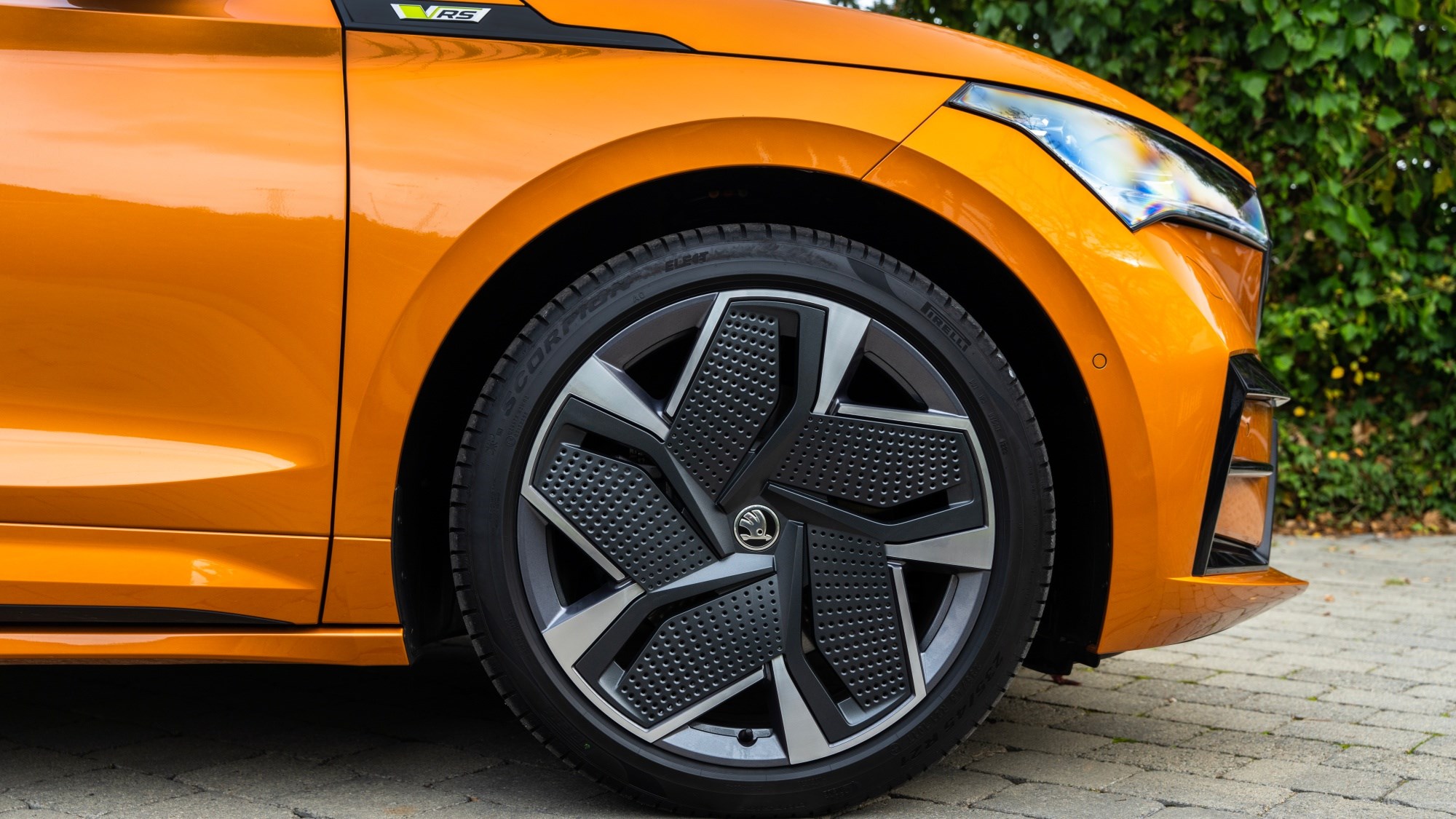
Skoda Enyaq Coupe: verdict
We might have been a little hard on the Coupe’s dynamics, because overall we really like the Enyaq. As an EV to run for the long haul, it’s very capable and likeable, and overall comes across as being Volkswagen Group’s most convincing MEB model. However, those qualities apply equally to the SUV this car is based on.
The success of the vRS depends on your perspective. It stays true to the badge in offering a swifter but no more taxing version of the Enyaq Coupe, but feels outgunned by many similarly priced rivals. Even so, it’s a tidy handling thing thats just missing a bit more involvement.
Would we recommend the Enyaq Coupe over the SUV? Well, the vRS is the best driving Enyaq we’ve experienced, but it’ll be available in both bodystyles before long, so that’s a moot point. However, the Coupe is more expensive than the SUV and less practical. Whether those looks make those penalties worthwhile is your call.